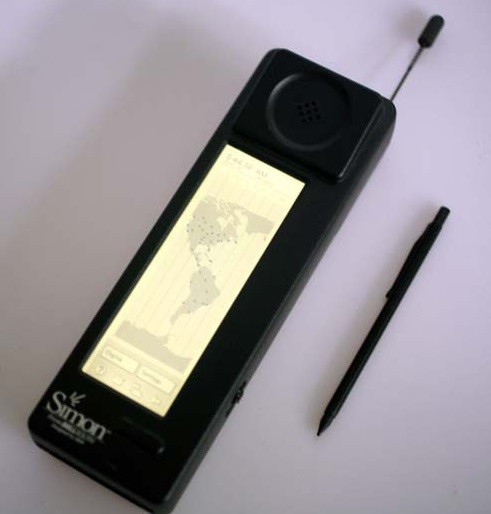Check out the World's First Smartphone: IBM Simon Turns 20
| Ana Verayo | | Aug 17, 2014 08:50 AM EDT |
(Photo : Microsoft)
The IBM Simon, the device that became the catalyst for the worldwide smartphone revolution, turns 20.
It's set to become one of the star attractions at the Science Museum in London and will be featured in an exhibition that will explore the history of information and communication technology.
Like Us on Facebook
IBM Simon was also the first device to merge a mobile phone with a personal computer. It could accomplish tasks such as writing and drawing, managing contacts and calendar events and send faxes.
It even had apps that could be accessed using a stylus and a touch screen.
IBM Simon is now on display at the Science Museum and will be a permanent piece at the Information Age gallery starting October 25.
It was once owned by an American project manager who worked for a construction firm. He used IBM Simon to receive and sign off on technical drawings via fax. IBM Simon eventually became an efficient way of not having to print anything on paper.
Unfortunately, it was a very impractical mobile device given it weighed half a kilo and its battery couldn't last longer than an hour. It had clunky cartridges for apps and only sold 50,000 units.
Priced at US$899 at the time, it was expensive for most people and only functioned in the United States. Since there was no mobile internet in the mid-90s, IBM Simon would only work via fax and it couldn't send emails unless it was connected to a PC.
The IBM Simon was a commercial flop but it was heralded as one of the precursors of a new breed of devices that combined the functions of a mobile phone and personal digital assistants.
The first device to ever use a Symbian mobile operating system is the Ericsson R380 from which the word "smartphone" was coined in 2000.
After 2002, smartphones were already receiving modest response from the market. For example, the Palm OS Treo already had a touchscreen and a working keyboard along with the popular Blackberry Quark series.
But it wasn't until 2007 when Apple launched its first iPhone where consumer interest suddenly peaked, making Apple a major gamechanger in the emerging smartphone market.
The first iPhone sold 6 million units that year and was the first ever to use finger input as a means of interacting with the device instead of using a stylus or a keypad.
It's been a long way since the creation of IBM Simon to the latest iPhone. But one problem is still prevalent among smartphone users: the perfect screen size.
According to a 1995 Home Office Computing review of the first smartphone, it could be that users are asking too much of PDAs but how can anyone fit a large touchscreen into an object that is supposed to fit in your pocket?
TagsCheck out the World's First Smartphone: IBM Simon Turns 20, ibm simon, world's first smartphone, science museum london, first smartphone in london museum, exhibit about mobile technology, evolution of smartphones, smartphones through the years, world's first smartphone photo, 20th anniversary smartphone, what is the world's first smartphone
©2015 Chinatopix All rights reserved. Do not reproduce without permission
EDITOR'S PICKS
-

Did the Trump administration just announce plans for a trade war with ‘hostile’ China and Russia?
-

US Senate passes Taiwan travel bill slammed by China
-

As Yan Sihong’s family grieves, here are other Chinese students who went missing abroad. Some have never been found
-

Beijing blasts Western critics who ‘smear China’ with the term sharp power
-

China Envoy Seeks to Defuse Tensions With U.S. as a Trade War Brews
-

Singapore's Deputy PM Provides Bitcoin Vote of Confidence Amid China's Blanket Bans
-

China warns investors over risks in overseas virtual currency trading
-

Chinese government most trustworthy: survey
-

Kashima Antlers On Course For Back-To-Back Titles
MOST POPULAR
LATEST NEWS
Zhou Yongkang: China's Former Security Chief Sentenced to Life in Prison

China's former Chief of the Ministry of Public Security, Zhou Yongkang, has been given a life sentence after he was found guilty of abusing his office, bribery and deliberately ... Full Article
TRENDING STORY

China Pork Prices Expected to Stabilize As The Supplies Recover

Elephone P9000 Smartphone is now on Sale on Amazon India

There's a Big Chance Cliffhangers Won't Still Be Resolved When Grey's Anatomy Season 13 Returns

Supreme Court Ruled on Samsung vs Apple Dispute for Patent Infringement

Microsoft Surface Pro 5 Rumors and Release Date: What is the Latest?










